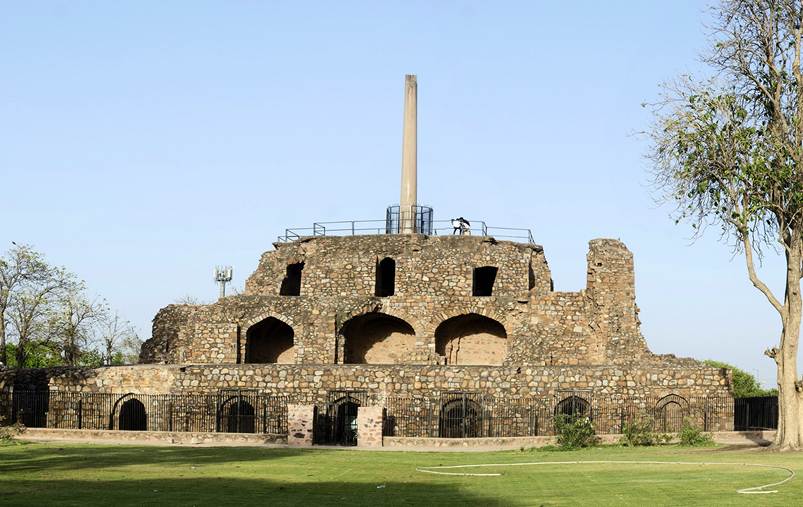Geographical & Historical Context
- Location: Topra Kalan village, Yamunanagar district, Haryana; ~14 km from Yamunanagar city and ~90 km from Chandigarh.
- Historical Significance:
- Original site of the Delhi-Topra Ashokan Pillar carrying Emperor Ashoka’s moral edicts.
- Pillar moved to Delhi in the 14th century by Sultan Firoz Shah Tughlaq.
- Referenced by Sir Alexander Cunningham (first DG of ASI) and Hiuen Tsang (7th-century Chinese Buddhist scholar) as a major Buddhist activity centre.
Relevance : GS 1(Heritage , Culture , History)

Recent Discoveries (2024–2025)
- Artifacts Recovered:
- Painted Grey Ware (PGW): Typically dated to 1200–600 BCE, linked to late Vedic culture.
- Black-and-Red Ware, Black-on-Red Ware, Black Ware: Associated with Chalcolithic to early historic phases.
- Stamped pottery, moulded bricks, beads: Indicates craft specialization and urban organization.
- Structural Remains:
- Possible dome-like structure (hypothesized Buddhist stupa).
- Buried walls, platforms, room-like enclosures in varied orientations, at depths of 4–5 m (dense habitation layers).
- Shallow wall formations at 0.2–0.8 m depth (later-period constructions).
Chronological Insights
- Estimated Age: Site likely dates back to ~1500 BCE — nearly 3,500 years old.
- Cultural Sequence:
- Early occupation with PGW (Late Vedic period).
- Mauryan-era Buddhist activity (3rd century BCE).
- Continued habitation into medieval period (Firoz Shah Tughlaq’s relocation of Ashokan Pillar).
Ground Penetrating Radar (GPR) Findings
- Survey Conducted: January 2025 by IIT Kanpur, led by Prof. Javed Malik.
- Purpose: Map sub-surface features without excavation.
- Revealed:
- Well-planned settlement layout.
- Multi-layered construction suggesting successive cultural phases.
- Large, buried architectural elements supporting long-term, organized settlement.
Buddhist Connection
- Evidence supports Topra Kalan as a Buddhist hub in Mauryan times:
- Hypothesized stupa remains.
- Historical accounts from Hiuen Tsang describing Buddhist establishments in the region.
- Link to Ashoka’s moral edicts pillar.
Archaeological & Preservation Challenges
- No Excavation Yet: Site lies under a densely populated village — relocation is complex and sensitive.
- Local Reports: Residents have unearthed PGW, red ware, and other artifacts during house construction.
- Risk: Construction without archaeological supervision could damage remains.
Tourism & Cultural Heritage Potential
- Ashoka Edicts Park:
- 27-acre park in Topra Kalan.
- Houses a 30-foot Ashoka Chakra replica (India’s largest, recognised by Limca Book of Records, 2020).
- Proposal: Reconstruction of four ancient stupas at the park to boost Buddhist heritage tourism.
- Strategic Relevance: Fits into India’s Buddhist circuit tourism initiatives, linking with sites like Sarnath, Nalanda, and Rajgir.
Significance of Findings
- Archaeological Importance:
- Extends known habitation in Yamunanagar region back to Late Vedic period (~1500 BCE).
- Strengthens Haryana’s position in India’s early historic and Buddhist heritage map.
- Cultural Continuity: Shows transition from Vedic settlement to Mauryan Buddhist influence to medieval Islamic period.
- Policy Implication: Need for non-invasive archaeological methods (e.g., GPR, resistivity surveys) in populated heritage sites.



